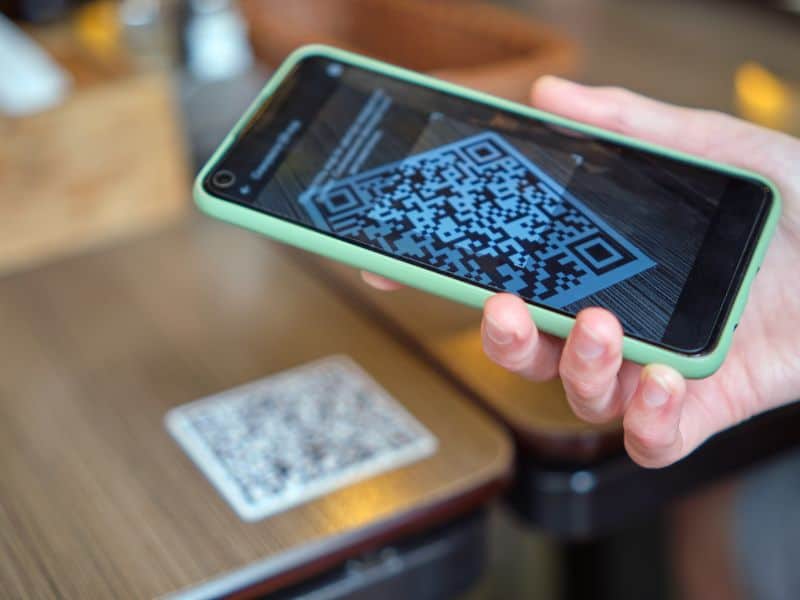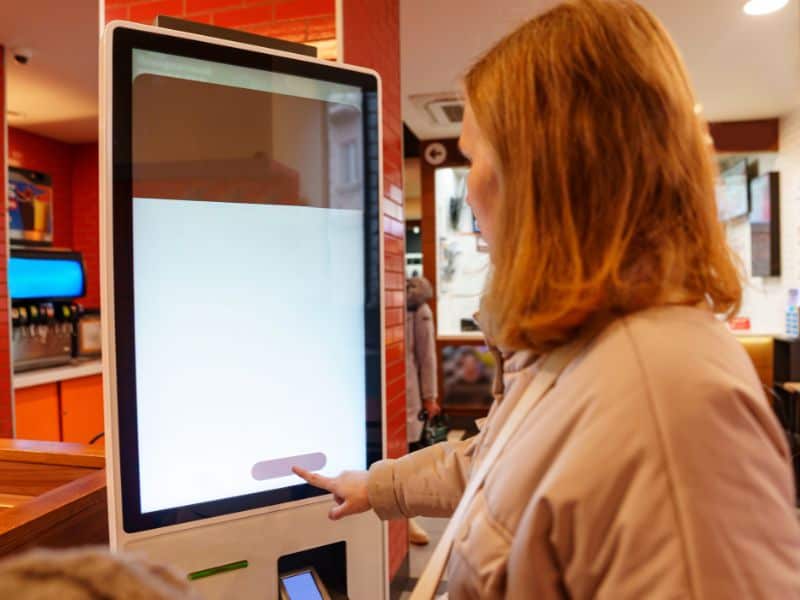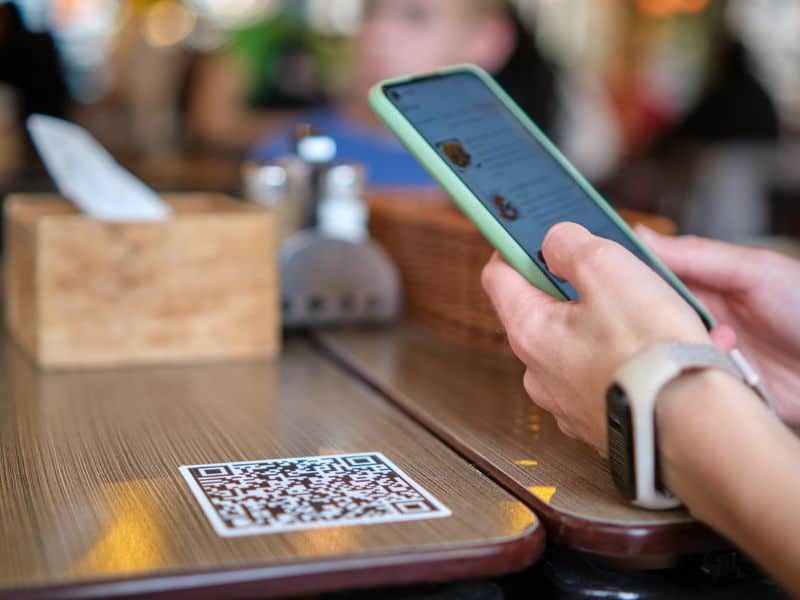Self-Ordering Kiosks: Are They Worth the Investment for Restaurant Owners?
Self-ordering kiosks have become increasingly popular in the restaurant industry, offering customers a convenient and efficient way to place their orders. In this blog post, we will explore whether these kiosks are a worthwhile investment for restaurant owners. Are they truly advantageous or just a temporary trend? Whether you’re a restaurant owner looking to enhance customer experience or a curious reader interested in the latest trends, this post will help you make an informed decision.
Brief overview of self-ordering kiosks increasing popularity in the restaurant industry
Self-ordering kiosks have gained significant popularity in the restaurant industry in recent years. These innovative devices allow customers to place their orders and make payments directly, without the need for traditional counter service. With the rise of technology and the increasing demand for convenience, more and more restaurants are adopting self-ordering kiosks to enhance the customer experience. These kiosks not only streamline the ordering process but also provide customers with a sense of control and efficiency. As a result, they have become a must-have for many restaurant owners looking to stay ahead of the competition and meet the evolving needs of their customers.
Advantages of Self-Ordering Kiosks
Self-ordering kiosks offer numerous advantages for retail and restaurant owners. Firstly, they enhance customer satisfaction and convenience by allowing customers to browse the menu, customize their orders, and make payments at their own pace. Secondly, these kiosks significantly improve order accuracy, reducing the chances of errors caused by miscommunication. Additionally, they enhance operational efficiency by streamlining the ordering process, resulting in reduced wait times for customers. Overall, self-ordering kiosks provide a seamless and efficient experience for both customers and business owners, making them a valuable investment in the retail and restaurant industry.
Increased customer satisfaction and convenience
Self-ordering kiosks offer increased customer satisfaction and convenience. Customers can browse through the menu at their own pace, customize their orders, and make payments without having to wait in long queues. This eliminates the frustration of waiting for a server and ensures a seamless ordering experience. Additionally, kiosks provide a sense of control to customers, allowing them to take their time and make informed decisions. With self-ordering kiosks, customers can enjoy a hassle-free dining experience, leading to higher customer satisfaction and repeat business for restaurant owners.
Enhanced order accuracy with self-ordering kiosks
One of the key advantages of self-ordering kiosks for restaurant owners is the enhanced order accuracy they offer. With traditional ordering methods, there is always a chance of miscommunication or human error, leading to incorrect orders. However, self-ordering kiosks eliminate this issue by allowing customers to directly input their orders themselves. This not only ensures that the order is accurately recorded but also reduces the chances of misunderstandings or mistakes. By improving order accuracy, kiosks can help businesses provide a better customer experience and minimize the need for order corrections or refunds, ultimately saving time and resources.

Group of friends placing orders at self-service kiosks in a mall food court.
Self-ordering kiosks improved efficiency and reduced wait times
Self-ordering kiosks have proven to be a game-changer for retail and restaurant owners, thanks to their ability to improve efficiency and reduce wait times. With self-ordering kiosks, customers can quickly browse through the menu, customize their orders, and complete the transaction without the need for human interaction. This not only speeds up the ordering process but also minimizes errors that can occur when taking orders manually. By streamlining the ordering process, self-ordering kiosks allow businesses to serve more customers in less time, resulting in increased customer satisfaction and higher revenue potential.
Cost Considerations
When considering the implementation of self-ordering kiosks, cost is an important factor to consider. While there may be an initial investment and installation cost, there are potential long-term savings in labor costs. By automating the ordering process, restaurant owners can reduce the number of staff needed to take orders, leading to significant savings over time. However, it is crucial to conduct a return on investment (ROI) analysis to ensure that the benefits outweigh the costs. Additionally, ongoing maintenance and technical support should be factored into the cost considerations. Overall, while there may be upfront expenses, the potential cost savings make self-ordering kiosks a worthwhile investment for many restaurant owners.
Potential long-term savings in labor costs
One of the key advantages of self-ordering kiosks for retail and restaurant owners is the potential for long-term savings in labor costs. By implementing self-ordering kiosks, businesses can reduce the number of staff required to take orders and process payments. This not only saves money on wages but also eliminates the need for additional training and supervision. Moreover, self-ordering kiosks can handle multiple orders simultaneously, increasing efficiency and reducing wait times. While there may be an initial investment involved, the long-term savings in labor costs make self-ordering kiosks a worthwhile investment for businesses looking to streamline operations and improve profitability.
Initial investment and installation costs
When considering the implementation of self-ordering kiosks, one important factor to consider is the initial investment and installation costs. While the benefits of these kiosks are undeniable, it is crucial to evaluate the financial implications. The cost of purchasing and installing the kiosks can vary depending on the size and complexity of the system. Additionally, there may be additional expenses for software integration and customization. However, it is essential to look beyond the upfront costs and consider the potential long-term savings in labor costs and increased efficiency. Conducting a thorough cost analysis and ROI evaluation will help determine if the investment is worth it for your retail or restaurant business.
Return on investment (ROI) analysis
Return on investment (ROI) analysis is a crucial factor to consider before investing in self-ordering kiosks for retail or restaurant owners. While the initial investment and installation costs may seem daunting, it is important to evaluate the long-term benefits and potential savings. By analyzing the expected increase in efficiency, reduction in labor costs, and improved customer satisfaction, owners can determine the ROI of implementing self-ordering kiosks. This analysis helps in making an informed decision about whether the investment is worth it or not. It ensures that the kiosks will provide a positive financial impact and contribute to the overall success of the business.
Potential Challenges and Solutions
Implementing self-ordering kiosks in a retail or restaurant setting may come with its fair share of challenges. Technical issues and maintenance requirements can arise, requiring regular updates and troubleshooting. Integration with existing POS systems can also be a hurdle that needs to be addressed. Additionally, staff training and customer support may be necessary to ensure a smooth transition and optimal user experience. However, these challenges can be overcome with proper planning and support from the kiosk provider. By addressing these potential obstacles, retail and restaurant owners can maximize the benefits of self-ordering kiosks and provide a seamless ordering experience for their customers.
Self-ordering kiosks technical issues and maintenance requirements
When considering the implementation of self-ordering kiosks, one important factor to consider is the potential technical issues and maintenance requirements that may arise. While these kiosks are designed to be user-friendly, there is always a possibility of technical glitches or malfunctions. Additionally, regular maintenance and updates may be necessary to ensure smooth operation. However, these challenges can be mitigated by partnering with a reliable kiosk provider that offers prompt technical support and maintenance services. By addressing these concerns proactively, restaurant owners can minimize disruptions and maximize the benefits of self-ordering kiosks for their business.
Self-ordering kiosks integration with existing POS systems
When considering the implementation of self-ordering kiosks, one important factor to consider is the integration with existing POS (Point of Sale) systems. Seamless integration between the kiosk and the POS system is crucial for efficient order processing and inventory management. It ensures that orders placed through the kiosk are seamlessly transferred to the kitchen or bar, minimizing errors and delays. Additionally, integration allows for real-time updates on inventory levels, enabling restaurant owners to manage their supplies effectively. Therefore, before investing in self-ordering kiosks, it is essential to evaluate the compatibility and integration capabilities with the existing POS system to ensure a smooth and streamlined operation.
Staff training and customer support
When considering the implementation of self-ordering kiosks, one important factor to consider is staff training and customer support. While these kiosks are designed to be user-friendly, there may still be a learning curve for employees who need to assist customers with using the kiosks. Proper training should be provided to ensure that staff members are knowledgeable about the kiosk’s functionalities and can troubleshoot any issues that may arise. Additionally, having a dedicated customer support system in place is crucial to address any customer concerns or questions regarding the kiosk. By investing in staff training and customer support, restaurant owners can ensure a smooth and positive experience for both employees and customers.
Factors to Consider Before Investing Self-ordering Kiosks
Before investing in self-ordering kiosks, there are several factors that retail and restaurant owners should consider. Firstly, they need to assess the complexity of their menu and the level of customization options they offer. Some kiosks may not be able to handle complex orders or special requests. Secondly, integration with other technology solutions, such as POS systems and inventory management, should be evaluated to ensure seamless operations. Lastly, owners should weigh the cost of investment against the potential benefits and ROI. By carefully considering these factors, owners can make an informed decision about whether self-ordering kiosks are a worthwhile investment for their business.
Menu complexity and customization options
When considering the implementation of self-ordering kiosks, one important factor to consider is the complexity of your menu and the level of customization options you offer. Self-ordering kiosks are most effective when the menu is straightforward and easy to navigate. If your menu is extensive or offers a lot of customization options, it may be challenging to design a user-friendly interface for the kiosk. Additionally, you need to ensure that the kiosk can handle complex orders accurately and efficiently. Taking into account the menu complexity and customization options will help you determine if self-ordering kiosks are a suitable investment for your restaurant.
Integration with other technology solutions
When considering the implementation of self-ordering kiosks, one important factor to consider is the integration with other technology solutions. This includes compatibility with existing POS systems, mobile ordering apps, and loyalty programs. Seamless integration ensures a smooth and efficient operation, allowing for a seamless flow of data and information between different systems. It also enables customers to have a consistent experience across various platforms. By investing in self-ordering kiosks that can integrate with other technology solutions, retail and restaurant owners can maximize the benefits and provide a seamless and convenient experience for their customers.
Conclusion
In conclusion, self-ordering kiosks can be a valuable investment for restaurant owners. They offer numerous advantages such as increased customer satisfaction, improved order accuracy, and enhanced efficiency. While there are initial costs involved, the potential long-term savings in labor costs and the positive impact on customer experience make them worth considering. However, it is important to carefully evaluate factors such as menu complexity and integration with existing systems before making a decision. With proper planning, training, and support, self-ordering kiosks can be a game-changer for businesses in the retail and restaurant industry.



